What is kudzu vine? And how to identify this invasive plant
Learn how to spot this troublesome invasive species and what steps you can take to remove it
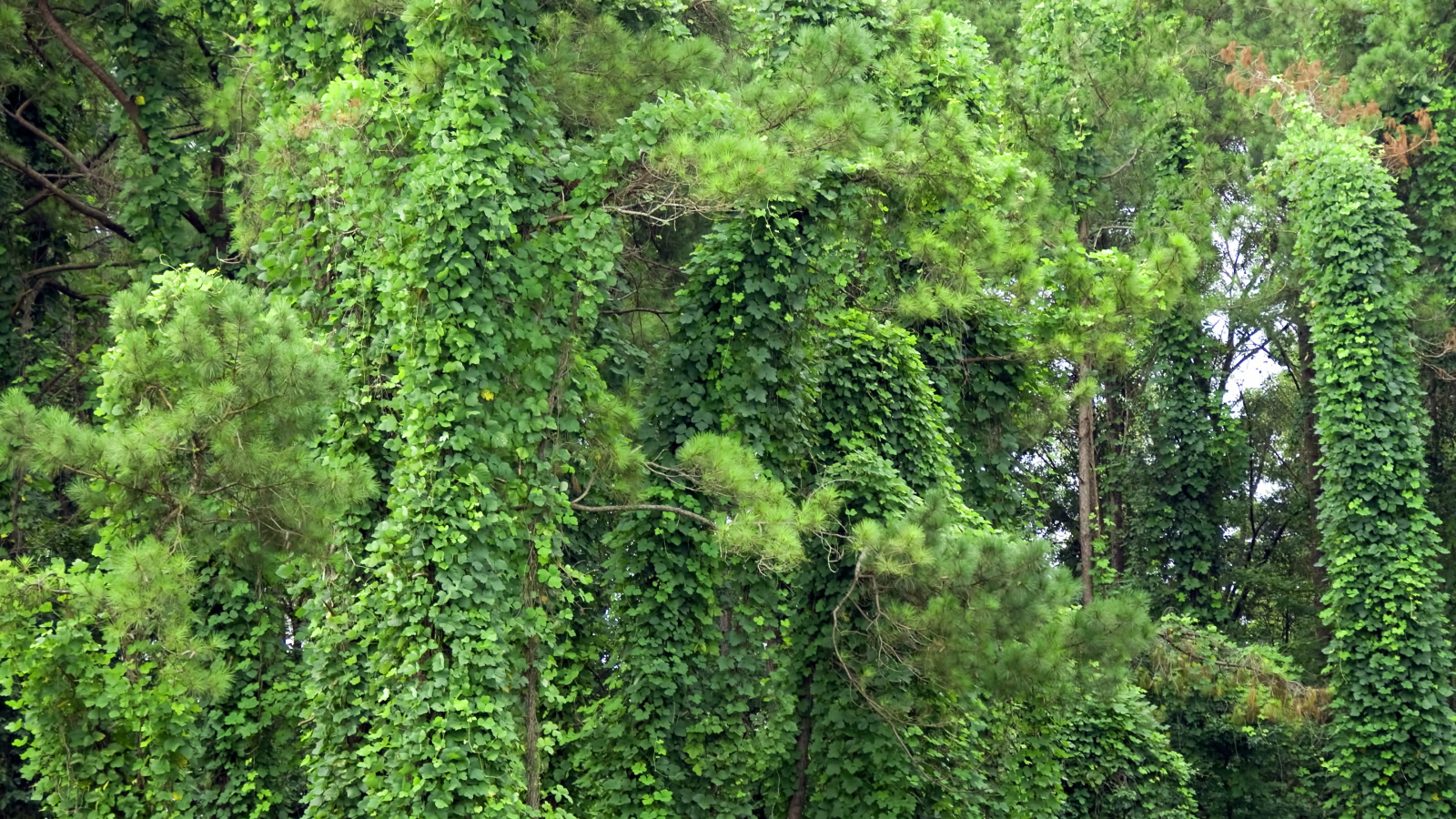

Kudzu vine is an invasive species that can quickly take over your backyard. This weed was introduced to the United States in the late 19th century, originally thought of as a decorative ground cover that could help to prevent soil erosion. Quickly, this invasive weed got out of hand and began dominating native ecosystems.
Today, kudzu, Pueraria montana, is considered one of the most invasive plants worldwide. With its rapid growth rate, known to grow up to a foot a day in optimal conditions, kudzu can quickly smother backyards, trees and buildings. If left unmanaged, within a short period kudzu will blanket all things. Today, it is a common sight across much of the US.
The unchecked proliferation of this perennial weed is dangerous for both homeowners and businesses. The spread of this invasive weed serves as a cautionary tale about the consequences of introducing species without fully understanding the impact this could have on the local ecosystem.
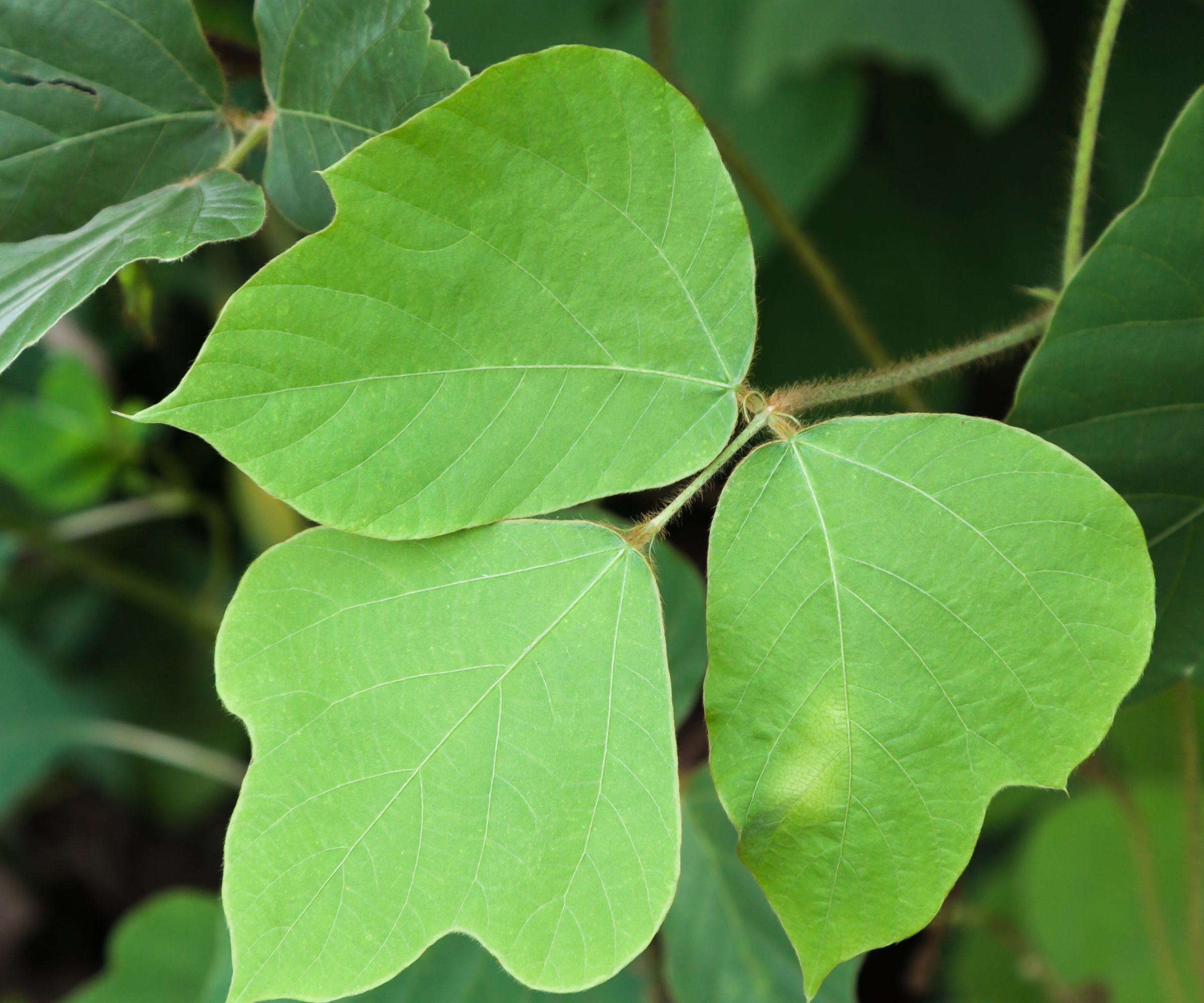
What is Kudzu?
Kudzu is an invasive species that can quickly spread and dominate ecosystems. Knowing how to identify kudzu is important, and understanding different treatment and mitigation strategies can help to limit the damage caused by this weed.
How to identify kudzu
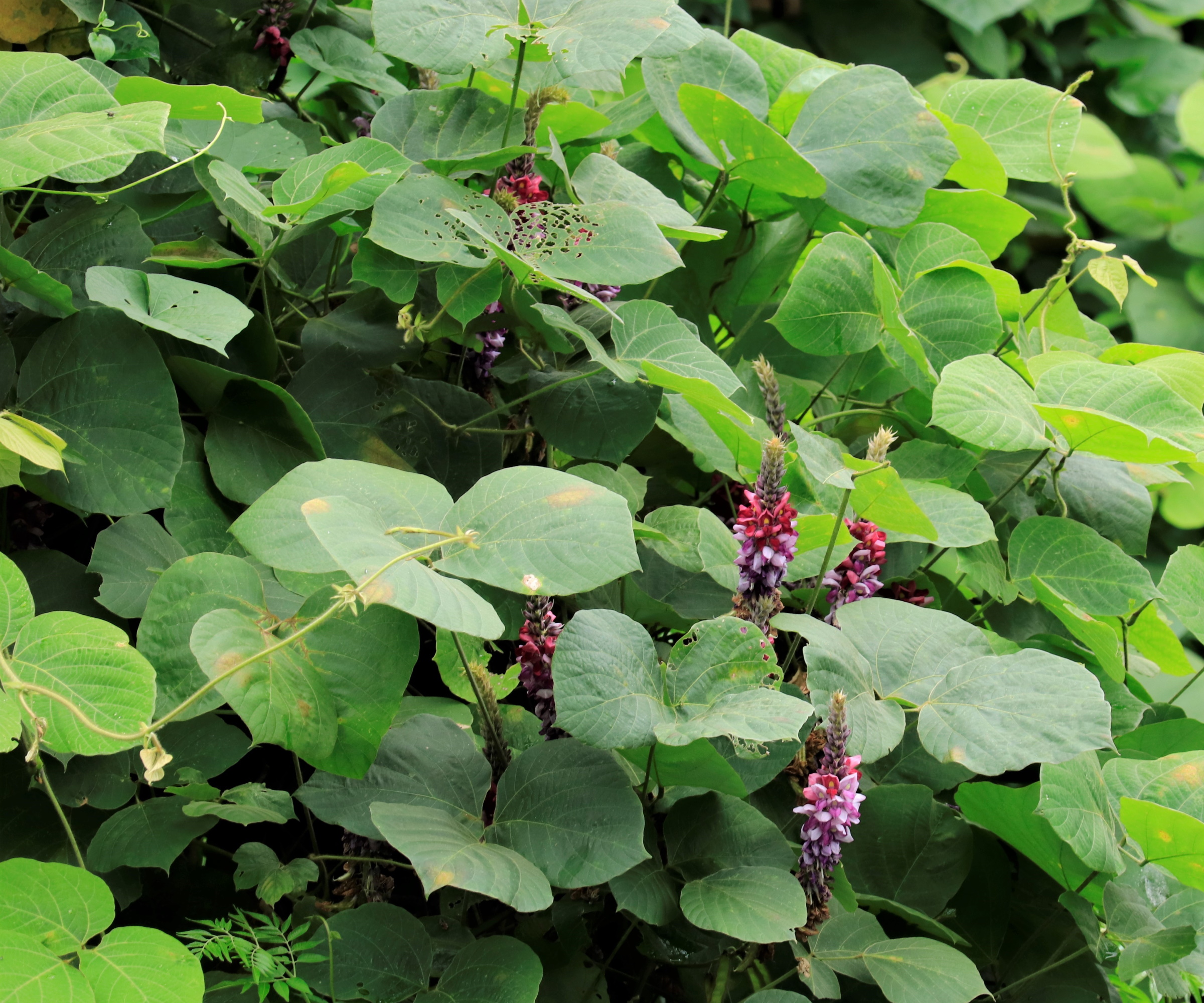
It is crucial to identify kudzu as soon as possible. As kudzu spreads, it becomes very difficult to eradicate.
This invasive species 'has a reputation as the vine that ate the South for good reason,' says Jen McDonald, garden expert and a co-founder of Garden Girls. Kudzu is found across the southeastern United States, but in recent years has been reported in northern states like Oregon and Pennsylvania.
'Kudzu often takes over abandoned lots, buildings and telephone poles,' Jen continues, 'spreading by rhizomes and runners.' Large numbers of vines can grow from a single rhizome, and whenever a vine makes contact with the soil, roots will grow, forming new, separate plants. This leads to blanket-like growth, with the invasive kudzu able to swamp and dominate all in its path.
Fortunately, kudzu is relatively easy to identify. Its leaves are dark green, appearing slightly oval or heart-shaped and usually measure 3 to 4 inches long, seen in the image above. The underside of the kudzu leaf is textured, with tiny white hairs.
Kudzu can establish itself almost anywhere, able to grow in both sun or shade. When growing in full sun, pea-like purple flowers will grow. Whilst attractive, the flowers are not to be enjoyed, as the damage that this plant can cause is of great concern.

Jen McDonald is a garden expert and co-founder of Garden Girls, LLC, based in Houston, TX. With 14 raised garden beds and 400 square feet of garden space, Jen grows cut flowers to peanuts, amaranth to okra, and everything in between.
Action to stop kudzu spreading
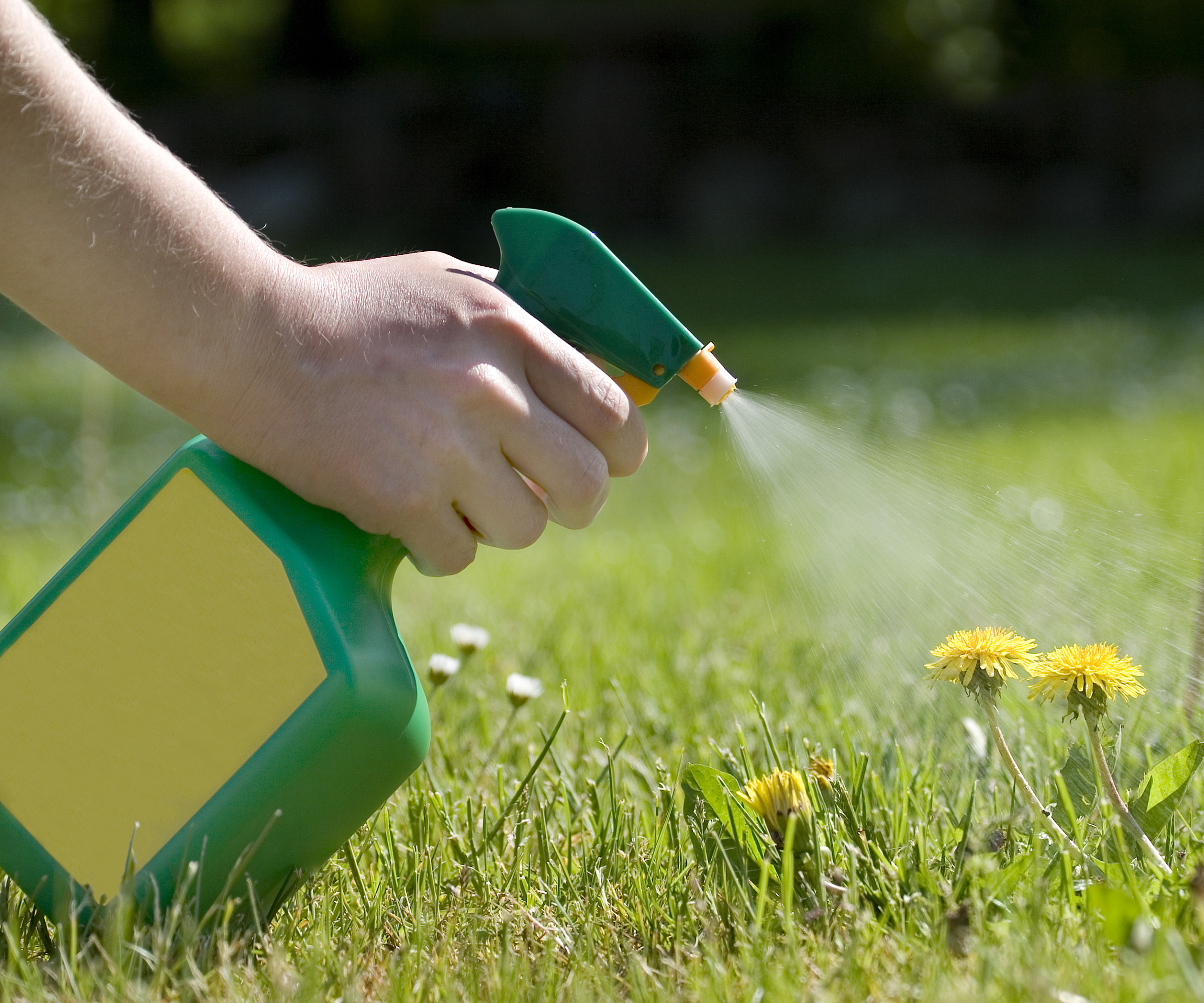
'Permanent removal of Kudzu vine is not for the faint of heart. It takes persistence and patience,' says Jen. Removing the vines at ground level is a good first step, being sure that any kudzu waste is disposed of and not left to contaminate compost areas.
'If you are able, it is crucial to regularly mow during high growth periods,' Jen says, 'mowing from May through October.' Limiting the growth of the kudzu vine with consistent defoliation will help to weaken it, but not kill it. 'After a few years, yes, I said years, you should kill it completely,' Jen says, but this is not a guarantee.
For vines climbing over your home or through other structures, 'carefully remove the kudzu and cut at ground level,' Jen says, again disposing of the waste appropriately. Applying an organic herbicide at the base of the plant can help, but herbicides will have a limited impact on kudzu, particularly on established vines with large underground rhizome systems. When handling and cutting kudzu, always 'disinfect your tools and pruners,' says Jen.
If you have the space, keeping goats or sheep might be an option. 'Livestock might just be your best friend,' Jen continues, 'as consistent grazing for three to four years is known to do the trick.' Sadly, the option of keeping livestock might not be possible for most of us gardeners.
When attempting to combat kudzu, it is important to be consistent, mowing every few days in the summer, for example. If you are concerned about this invasive species, consider asking professional gardening companies for advice and help.
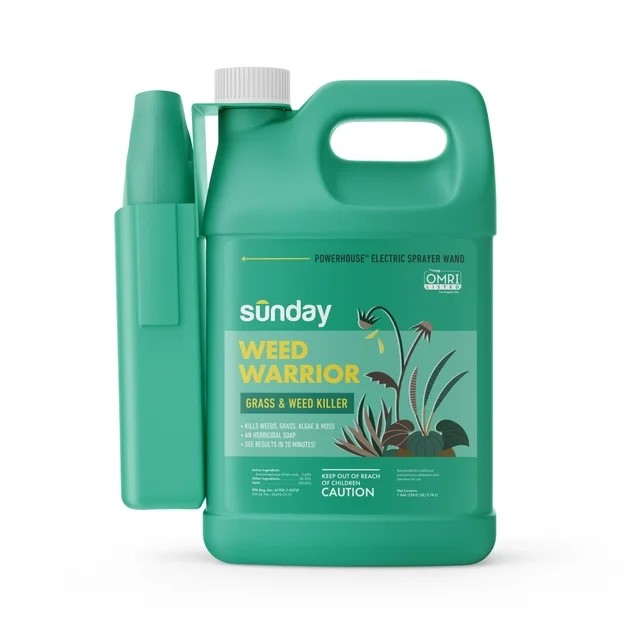
Eliminate weeds fast across your entire yard. Sunday’s weed warrior gallon sprayer offers an organic, eco-friendly solution for managing weeds and grasses over large areas.
FAQs
Is weed killer an effective method for tackling kudzu?
Herbicides can be effective in killing younger kudzu clusters, but they are not guaranteed to combat established plants. Kudzu develop extensive rhizomes and tap roots and can regrow even following herbicide application. Always apply weed killer with caution, following instructions as found on the packaging.
Kudzu is an invasive species that can cause significant damage to the local environment. It is always recommended to seek professional help if you are concerned about kudzu in your yard. Watch out for little kudzu bugs on kudzu vine, too, which can spread to other plants.
Sign up to the Homes & Gardens newsletter
Design expertise in your inbox – from inspiring decorating ideas and beautiful celebrity homes to practical gardening advice and shopping round-ups.

Thomas is a Content Editor within the Gardens Team at Homes and Gardens. He has worked as a professional gardener for both public spaces and private estates, specializing in productive gardening, growing food and flowers. Trained in Horticulture at the Garden Museum, he has written on gardening and garden history for various publications, including The English Garden, Gardens Illustrated, Hortus, The London Gardener and Bloom. He has co-authored a Lonely Planet travel book, The Tree Atlas, due out in 2024.
-
 Urban gardening ideas – 7 creative ways to grow in small spaces, balconies, containers, indoors, and more
Urban gardening ideas – 7 creative ways to grow in small spaces, balconies, containers, indoors, and moreMake the most of your space with these innovative ways to garden
By Tenielle Jordison
-
 'Sexy disco-era Italy meets Japanese farmhouse in the Brazilian jungle' was the description the interior designer gave this glass-walled modernist home
'Sexy disco-era Italy meets Japanese farmhouse in the Brazilian jungle' was the description the interior designer gave this glass-walled modernist homeOffering a warm welcome that defies its stark, modernist lines, this archictectural gem is full of surprises
By Karen Darlow